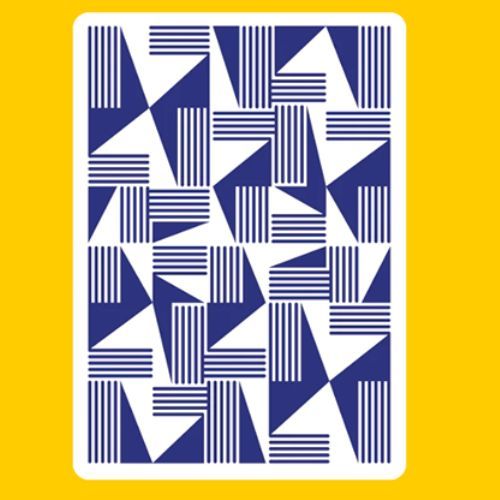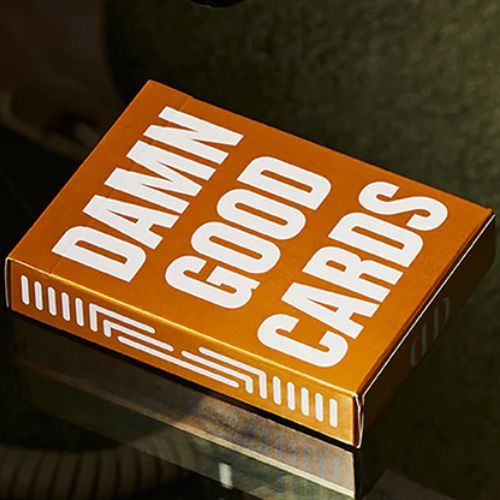DAMN GOOD CARDS NO.6 PAYING CARDS BY DAN & DAVE
dan and dave
Finally, an affordable game for those who seriously love cards.
Whether you are a practicing cardist or a professional magician, our range of cards Damn Good Cards has good-taste patterns printed on our beloved Thin Crushed® Stock For a higher manipulation experience.
56 regulatory poker size playing cards with standardized faces, white borders and without seal. Printed in the United States on FSC certified paper.
Limited and affordable, with new designs published regularly. Choose your favorite or collect them all!
About :
Inspired by the classic graphic design of the middle of the century, our series of damn good cards has a colorful collection of daring patterns to enrich a fun quality during use.
Printed using our preferred speciation by the U.S. Playing Card Co. with white borders, fine crushed paper and no seal on the storage box.
Designed and made for those who use cards every day. Premium cards at an affordable price.
What makes these cards so good anyway?
White borders:
The playing cards did not always have white borders. We are not exactly sure of history, but at some point, it must have been a design characteristic to help distinguish or quickly count a series of cards. Today, almost all the playing cards have a border. For Card Magic, the borders can help hide various sleight of hand, while, for Cardistry, they do the opposite and operate as a visual separator to embellish the movement of the cards in a momentum.
Historically, many conceptions of playing cards are confined inside a frame with white border, cropping or thus limiting the design to a predefined appearance ratio - a rectangular box. For Damn Good Cards, we thought it would be fun to create designs that are neither cropped nor confined to this box. Instead, each drawing creates its own natural border. In doing so, a homogeneous design continues from one map to another, thus offering a feeling of unity where the whole game acts as a singular design cut into 52 symmetrical blocks.
Thin crushed:
Thin crushed paper was not a characteristic of the U.S. Playing Card Co. which was offered until 2013, when we suggested that they reproduce the thin quality of the Stud playing cards which were printed on a fine paper that is no longer available. The idea was to "crush" the traditional bicycle paper by tightening the pressure of their embossing machine composed of two giant rolls sandwich around a sheet of cardboard paper. The process was unique and was not something that the USPCC had explored before. Although risky, we have signed a renunciation indicating that if the machine broke down, we would be responsible. For the benefit of all, it worked. A fine crushed game is about four to five cards thinner than a traditional bicycle game, while retaining the same quality of liveliness.
During the following years, all the D&D and Art of Play decks presented this crushed stock before the market spreads and begins to request the same functionality which is now offered by the USPCC as a premium option. After more than two decades of using all types of playing cards, we can say in all honesty that Thin Crushed allows better manipulation of the game.
No seal:
Before 1964, Uncle Sam demanded a special tax on the sale of playing cards; Therefore, a stamp has been emitted and used to seal a closed bridge. Tradition has continued with "seals" not issued by the government and has since become a design characteristic for personalized playing cards. We are known ourselves to embellish this functionality with sumptuous designs with personalized shapes and aluminum paper accents in relief, but for Damn Good Cards, the idea of keeping the box clean and simple seemed right. A seal can be difficult to open and, once removed, it can leave a sticky residue on the box or to fall involuntarily over time. Apart from the aesthetics, a seal does not bring any value and is therefore not necessary for these cards.

 English
English













































